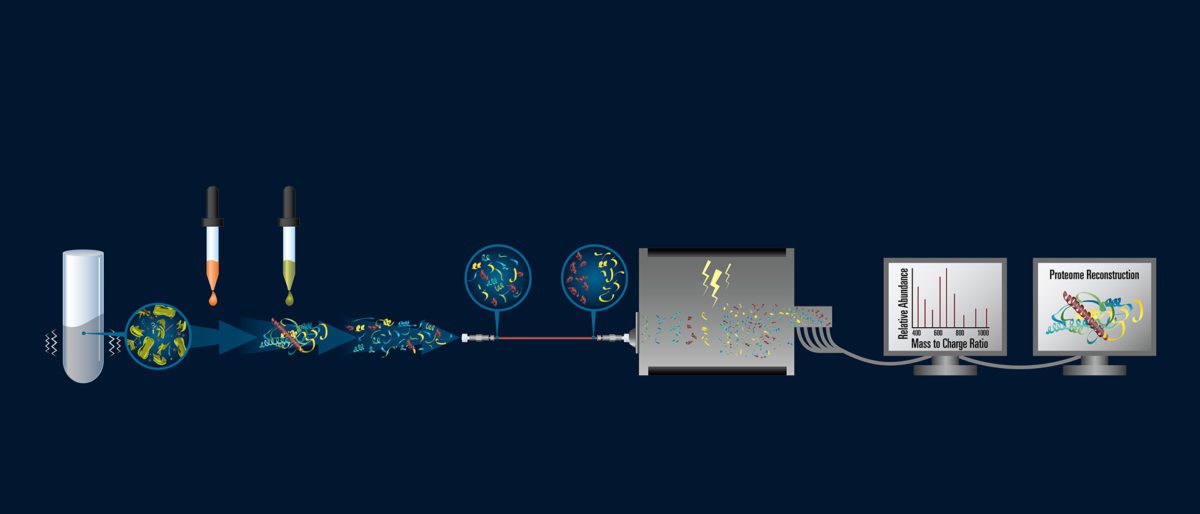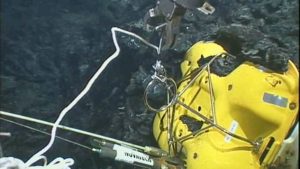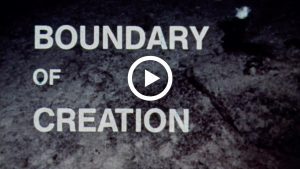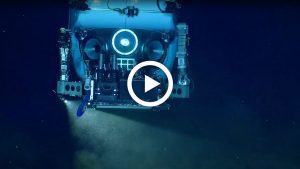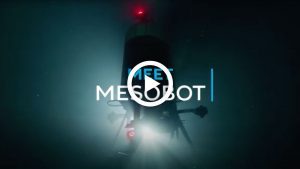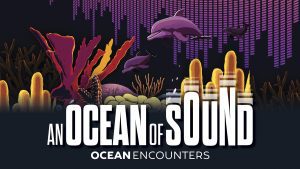How does proteomics work?
Marine scientists have begun to apply a new biomedical research approach to the study of the ocean: proteomics. Genomics is the study of organisms’ genes (their genome), which provide the blueprints to make proteins (their proteome) Proteins catalyze chemical reactions in the organisms. So while genomics can tell you what organisms are capable of, proteomics can tell you what organisms are actually doing in response to conditions and changes in their environment. A key technique of proteomics research uses mass spectrometers that distinguish and measure various proteins in organisms. Analytical instruments help scientists distinguish chemical compounds in complex mixtures.
Here’s how it works, from left to right:
- Culture samples contain phytoplankton cells and a muddle of the carbon-containing compounds that they produce and release.
- The samples are centrifuged to remove the cells and leave behind liquid containing the dissolved carbon compounds.
- After an extraction procedure, samples are pumped through a tube filled with material that attracts the organic carbon.
- Based on their chemical properties, compounds move through the material at different speeds. The process separates the organic carbon compounds into subsets that emerge from the tube at different times.
- The compounds sequentially enter a mass spectrometer, where any liquid is vaporized and the compounds become charged.
- The mass spectrometer distinguishes compounds based on a ratio of their mass and charge and counts their abundance.
- With computational analyses, scientists can compare and contrast the compounds produced by different phytoplankton.
(Illustration by Amy Caracappa-Qubeck, © Woods Hole Oceanographic Institution)
SEARCH RELATED TOPICS: Ocean Tech
Image and Visual Licensing
WHOI copyright digital assets (stills and video) on this website can be licensed for non-commercial use upon request and approval. Please submit your request via our Media Request Form.
For assistance or accessibility accommodations, call (508) 289-2647.
